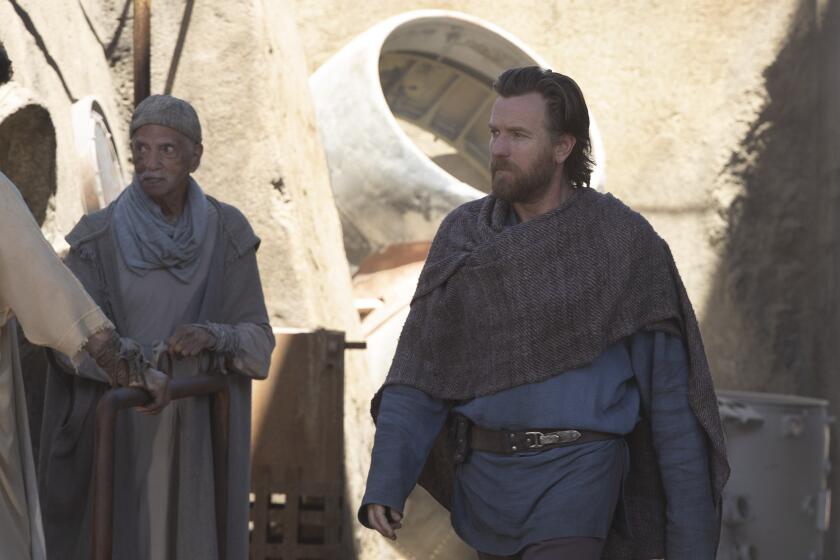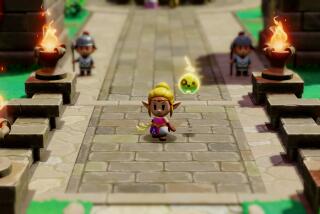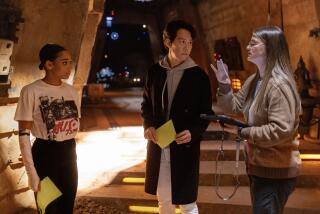How Disney’s ‘Obi-Wan Kenobi’ changes Princess Leia’s legacy forever
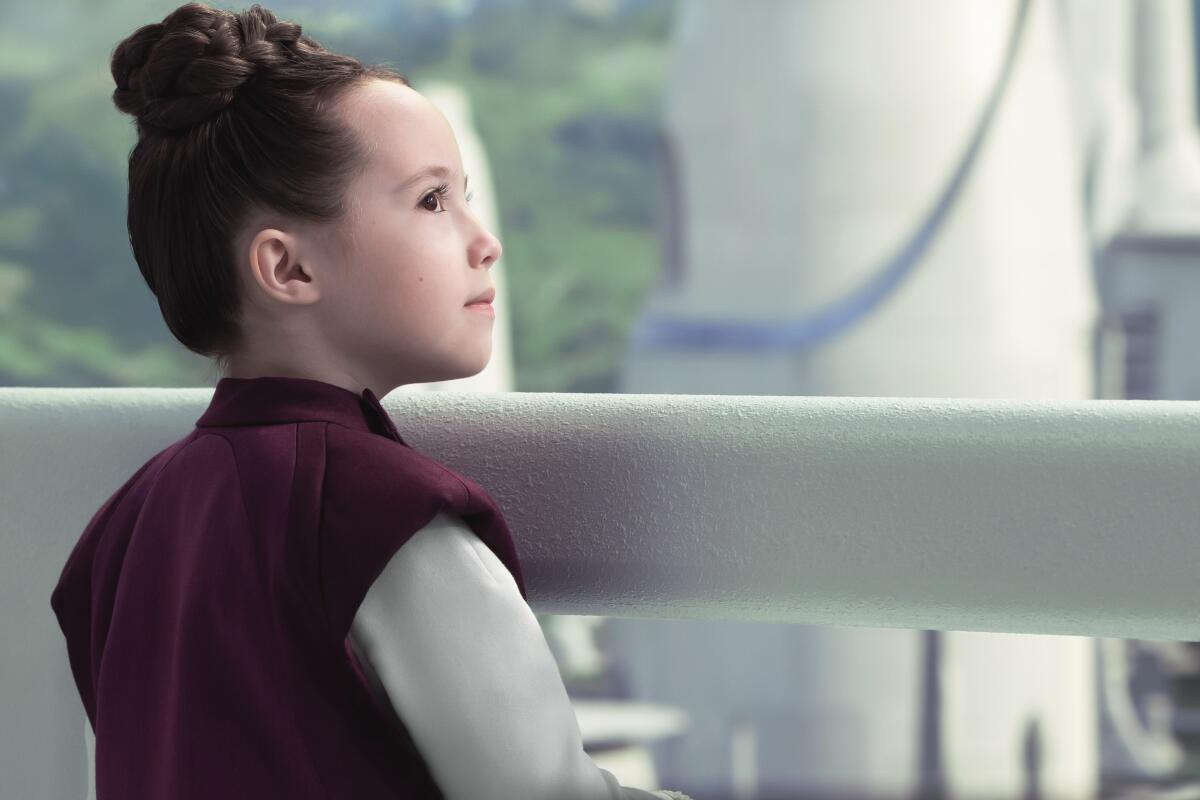
- Share via
This story contains spoilers for the Disney+ series “Obi-Wan Kenobi.”
When Bail Organa and his wife Breha reach out to Obi-Wan Kenobi for help rescuing their daughter, the senator from Alderaan tells the exiled Jedi master something “Star Wars” fans have long understood.
Princess Leia is just as important as Luke Skywalker.
It’s this statement that pushes Obi-Wan into action during the series premiere, and one that serves as “Obi-Wan Kenobi’s” thesis over the course of its season. The Disney+ series, which concluded Wednesday, expanded and reframed the legacy of Leia Organa, one of the franchise’s most beloved characters — and one whose central role in “Obi-Wan Kenobi” was kept hidden prior to launch.
A blaster-wielding princess who refused to be intimidated by even the galaxy’s most formidable villains, Princess Leia has been an essential part of the “Star Wars” tapestry since its debut: Leia sending a couple of droids to the desert planet Tatooine to seek Obi-Wan’s help in 1977’s “Star Wars: Episode IV — A New Hope” kicks off the adventure that launched the franchise.
We look back at the Star Wars history of Jedi Master Obi-Wan Kenobi, originated by Alec Guinness and played in ‘Obi-Wan Kenobi’ by Ewan McGregor.
Introduced as a fierce and capable leader of the Rebellion in the original trilogy, adult Leia (Carrie Fisher) is sassy, intelligent, brave, kind and committed to the cause, and has long commanded a legion of devoted fans. If it’s undeniable that Leia is one of the pillars of the franchise, though, “Star Wars” movies have always focused on telling stories about Chosen Ones. And unlike her brother Luke and father Anakin, Leia was not the Chosen One, so she was never the center of the narrative in the way they were.
Leia’s role in “Obi-Wan Kenobi” both expands her significance in the overall “Star Wars” story and recontextualizes existing canon in a way that deepens Leia’s imprint on the saga. It serves as a touching tribute to a character whose full arc was reportedly unable to be told as originally intended because of Fisher’s death in 2016.
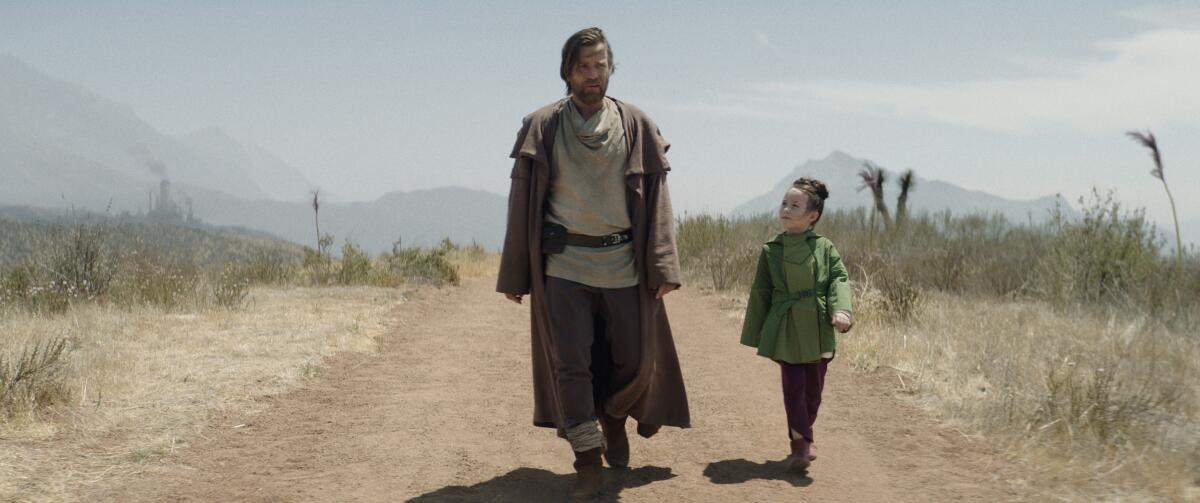
Directed by Deborah Chow, “Obi-Wan Kenobi” is set 10 years after the events of “Star Wars: Episode III — Revenge of the Sith.” The 2005 film saw Obi-Wan, played by Ewan McGregor, face off against Anakin Skywalker (Hayden Christensen) after learning that his former apprentice has been seduced by the dark side of the Force.
The aftermath has left Obi-Wan broken and haunted by his perceived failures — a far cry from the calmer, wiser Obi-Wan portrayed by Alec Guinness in “A New Hope.” “Obi-Wan Kenobi” reveals that it’s Leia who helps pull Obi-Wan out of this rut and put him back on the path to be the hero he’s meant to be.
Leia’s kidnapping and Bail’s declaration that she is just as important as her twin brother, who Obi-Wan has been watching over from afar, is what gets the Jedi master to come out of hiding. This setup signaled early on that it would be young Leia (Vivien Lyra Blair) herself who helps Obi-Wan see a new hope worth fighting for.
The complete guide to home viewing
Get Screen Gab for everything about the TV shows and streaming movies everyone’s talking about.
You may occasionally receive promotional content from the Los Angeles Times.
Leia at 10 years old is fearless, stubborn and wise beyond her years. It’s easy to see how this child will grow into the leader “Star Wars” fans have long known. And as Obi-Wan spends time with young Leia, he can’t help but note how much she reminds him of her parents.
“Princess Leia Organa,” Obi-Wan addresses her in the finale. “You are wise, discerning, kindhearted. These are qualities that came from your mother. But you’re also passionate and fearless. Forthright. These are gifts from your father. Both were exceptional people, who bore an exceptional daughter.”
And although Leia’s lineage has long been known, Obi-Wan’s words solidify the connection between her and Padmé and Anakin, which always seemed secondary to Luke’s connection to his father.

As a series set between film installments telling the stories of characters whose fates are already known, “Obi-Wan Kenobi” was given the difficult task of trying to expand and honor existing “Star Wars” canon. Part of that challenge was creating and sustaining emotional stakes for audiences to invest in.
“Obi-Wan Kenobi” pulled off emotionally resonant moments because it made Leia the heart of the story. Hearing someone say Leia is as important as Luke is in an episode of a “Star Wars” TV series — and then showing just how much — is always going to be meaningful for a Leia fan like me.
There will be viewers who comb through shows such as “Obi-Wan Kenobi” to for inconsistencies and conflicts with existing “Star Wars” lore, as well as those who take issue with its slightly predictable “Star Wars” beats or “fan service” as if they are crimes against the franchise’s integrity.
But “Star Wars” has always been about the power of hope. And there’s real poetry in the fact that Obi-Wan — who audiences first met as Leia’s “only hope” — finds his hope in Leia after all.
More to Read
The complete guide to home viewing
Get Screen Gab for everything about the TV shows and streaming movies everyone’s talking about.
You may occasionally receive promotional content from the Los Angeles Times.
